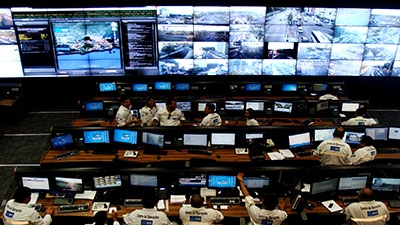They are not tourists. They are far from the conspicuous and towering Christ the Redeemer. But every day, these 400 men and women have the chance to see Rio de Janeiro like nobody else.
From a single room, they keep a close watch over Rio and its more than 6 million inhabitants. On an 80 square-meter screen they can keep track of much of what is going on in the city at one time, from traffic to emergency calls to waste collection.
Located just 2 minutes away from City Hall, the room is the heart of the Operations Center, which works 24/7 on monitoring life in the city.
Controllers, members of the police force, the fire department, public utility companies and other public institutions, share shifts monitoring videos captured by 900 cameras installed all over Rio.
Physical Integration
If there is an emergency, the controllers are able to easily communicate and coordinate a response. “The operations center enables both a physical and a logical integration of public services,” says Pedro Junqueira, the newly appointed chief operations officer at the Center.
“Additionally, from the press room, local journalists can spot and immediately broadcast any relevant information, which helps citizens plan their daily activities,” he explains.

